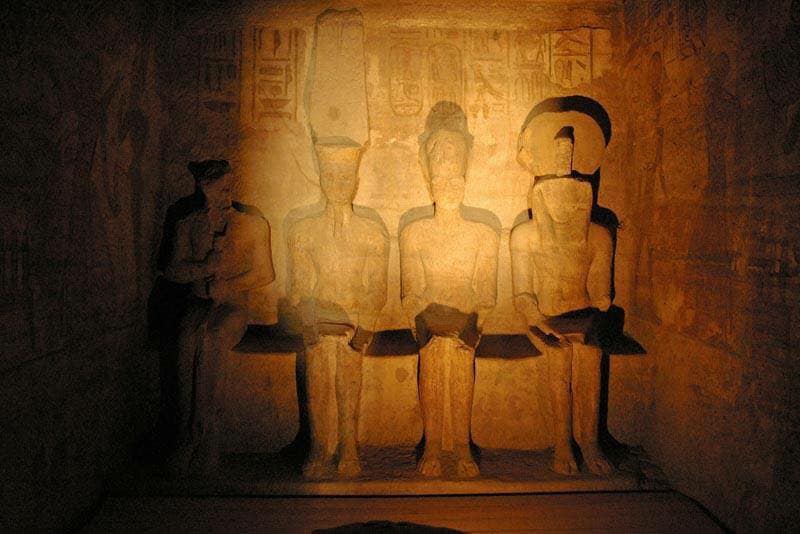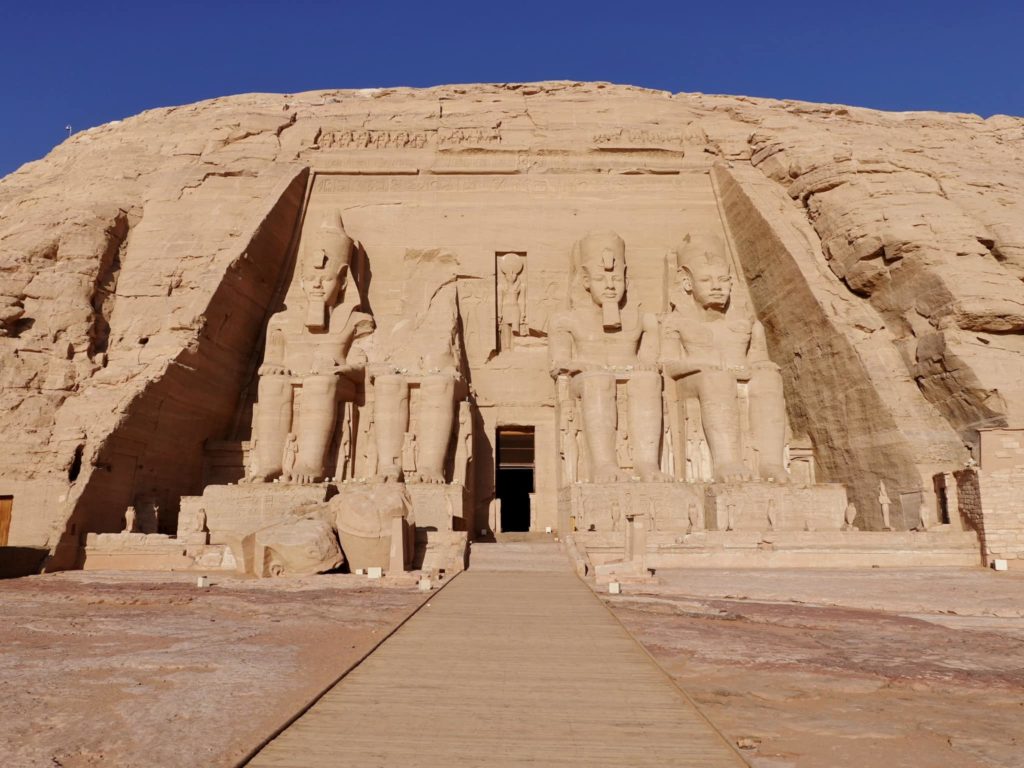
The face of Egypt’s Pharaoh Ramesses II statue at Abu Simbel was met with a beam of sunlight this morning in a solar alignment phenomenon which rarely occurs.
The ancient figure of Pharaoh Ramesses II is one of four seated carvings which form a rock sculpture in a side room off the hypostyle hall of the Abu Simbel Temple in the Aswan Province of Upper Egypt.
The great stone Pharaoh is flanked by two versions of the sun god, Ra-Horakhty and Amun Ra, along with Ptah, a god associated with the realm of the dead. It is said that the axis of the temple was so positioned by Ancient Egyptian architects as to allow rays of sunshine to enter the sanctuary twice a year, and illuminate the faces of all but Ptah, who remained in the dark.
Allegedly, those dates marked King Ramesses II’s birthday and coronation day, respectively, but there’s no real evidence to support the claim.
It was solar eclipses and sunlight phenomenon that originally prompted Ancient Greeks to study the stars.
The Tropic of Cancer has drifted over the last 3,000 years, because of the gradual change of Earth’s rotational axis, and therefore the dates of sunshine penetration may have been different when the structure was built. This is compounded by the fact that the temple was moved from its original setting, meaning the current alignment is less precise than it used to be.

Pharaoh Ramesses solar alignment at Abu Simbel, Egypt
Egypt’s Ministry of Tourism and Antiquities took to social media this morning (Sunday, October 22) to share the news:
“The phenomenon of solar alignment on King Ramesses II’s face inside the Abu Simbel Temple was witnessed on Sunday morning, October 22, 2023, in Aswan Province. It is worth noting that the sun illuminates King Ramesses II’s face twice a year, the second time on February 22.”
“This phenomenon occurred before 1964, on October 21 and February 21 every year, but after the move of the Abu Simbel Temple to its current location as part of the project to save the Nouba for the construction of the High Dam, this phenomenon became repeated on October 22 and February 22.”
Pharaoh Ramesses II and the Abu Simbel Temple
The Abu Simbel site is made up of two temples, one smaller sanctuary dedicated to Hathor and Nefertari, and the larger one – The Great Temple – which was dedicated to the gods Amun, Ra-Horakhty and Ptah.
The Great Temple took around 20 years to build and was completed around year 24 of Pharaoh Ramesses II‘s reign (1265 BC). The Pharaoh used the temple to deify himself, which is why his statue sits alongside the other gods.
There was also Greek graffiti left in the temple in 591 BC.
See all the latest news from Greece and the world at Greekreporter.com. Contact our newsroom to report an update or send your story, photos and videos. Follow GR on Google News and subscribe here to our daily email!



